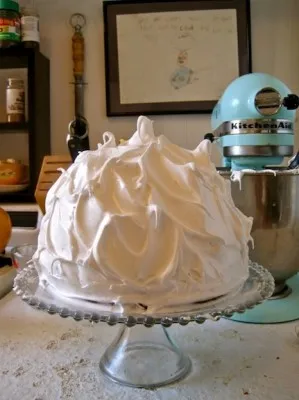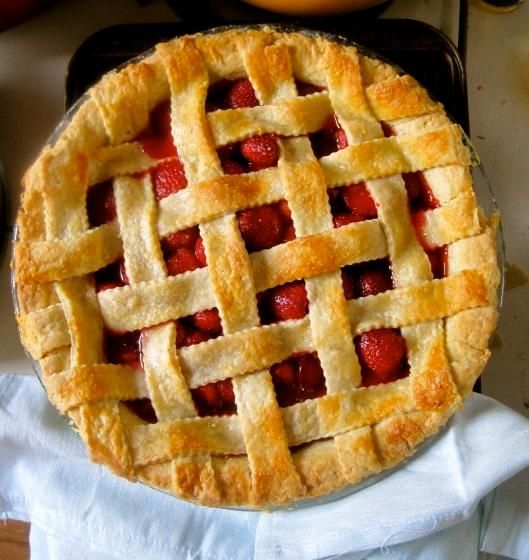From the Page to the Plate: Bringing Literary Dishes to Life
Authors like Roald Dahl or James Joyce never could have predicted that their words could be spun into these tantalizing meals
/https://tf-cmsv2-smithsonianmag-media.s3.amazonaws.com/filer/1e/50/1e50c676-99d2-41a4-9b26-d331989335df/book-and-herbs-2.jpg)
When James Joyce sat down and wrote, in Ulysses, “Her griddlecakes done to a goldenbrown hue and Queen Ann’s pudding of delightful creaminess,” he probably did not imagine that decades later, bloggers in the 21st century would be attempting to cook the very foods he described. But in the past few years a proliferation of literary food blogs have crept up all over the internet, claiming the recipes for literature’s most epic delicacies and culinary disasters.
With both real and invented recipes, today’s literary food bloggers attempt to recreate not just a dish, but also the scene surrounding a dish in its greater literary context. The chocolate cake in Roald Dahl’s classic Matilda, for example, is not just an ode to gluttony but also a symbol of the Trunchbull’s demented torture tactics as she forces poor Bruce Bogtrotter to gulp down the cake in its entirety.
Nicole Villenueve, author of the popular Paper and Salt literary food blog, digs deep to find the real recipes of famous authors and literary personalities. “I can occasionally find the recipes that they used themselves,” she says, “whether in their letters or their collections of papers.” Villenueve focuses not only on the dishes in fiction but also on the real life favorites of authors like E.B White and Raymond Chandler. (Most recently she posted the recipe for Robert Penn Warren’s favorite cocktail).

Cara Nicoletti, a blogger, baker and butcher in New York, invents recipes inspired by literary food scenes on Yummy-Books, a blog that relies mostly on literary descriptions. “Most fiction novels don’t have actual recipes in them,” she says, “which is what makes them so creative and fun. My favorite literary food scenes are somewhat vague—like the unspecified red berry pie in Steinbeck’s East of Eden—because they leave me lots of space to interpret and imagine.”
On the other end of the spectrum is Nicole Gulotta, whose blog eatthispoem invites readers to try recipes inspired by basic fruits and seasons. She uses the framework of a poem and develops a recipe that “reflects the essence of the original text in some way.” The recipe follows the sentiment of the text as opposed to a measured formula. “The poem now lives on and off the page,” says Gulotta.
And why do this? What good is it to eat like characters from a novel? For most, it’s the chance to insert oneself into a favorite novel or poem by sharing in the most quotidian of human activities: eating. “Because I connected so deeply with these characters,” says Nicoletti, “eating the food they ate just seemed like a very natural way for me to be closer to them.” Cooking the food dreamed up by a favorite author can make us feel part of the bookwriting process, because, as Villenueve adds, cooking “is a very similar process to writing.”
The process works both ways; on the one hand, eating like a character from a novel invites readers into our favorite books, but it also beckons our favorite characters out into the real world.
No one has brought more attention to this theory than historian and curator Lucy Worsley, who performs the feats (most notably by cooking the same foods) of famous historical figures in an effort to experience what life must have been like in say, the days of Henry VIII. On any given day Worsley can be found buying pounds of pheasants and gulping gallons of saltwater. Lauren Collins, in her profile of Worsley in The New Yorker, describes this phenomenon precisely: “Food and drink are perhaps the most effective of Worsley’s tools for revivifying the past.”
Food scenes stand out to readers in the same way that food-related memories seem to triumph over even the grandest events in real life. Of all the scenes in a book, the most memorable are often the ones with visceral descriptions of food, the kind that leave you either starving or retching. “I remember certain scenes in books based soley on the foods that were eaten in them,” says Nicoletti, “but it goes the other way too. My memories of certain foods are bound up in my memories of reading certain novels, as well.”
If food is the way to a man’s heart, then descriptions of foods might be the way to a reader’s eyes. And cooking those descriptions brings them right to the table. “Food often allows you to step into the story just a little bit more than you otherwise could,” says Villenueve. “You may not have been to Paris, but with Hemingway you can down a few oysters and live vicariously through him.”

What food from literature would you most want to be able to cook for yourself? Let us know and we’ll pass along your requests!